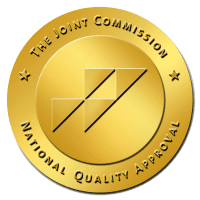Approximately 1.6 million Americans regularly use methamphetamine. It is a highly addictive substance that has one of the lowest recovery rates.
The good news is that with the right tools and regime–which usually begins with detox–recovery is possible. Learning more about the physiological effects of meth can aid in this endeavor.
If you want to know “How long does meth stay in your system?” keep reading. This article explains how methamphetamine impacts the body. It will help give you a clearer perspective on what recovery requires.
Meth Basics
Amphetamines are stimulants still used today to treat various conditions. These include attention deficit disorder, Parkinson’s disease, and narcolepsy, among others.
Methamphetamine is very similar to amphetamines in chemical composition. It is a much more powerful stimulant that has been around for more than a century.
In fact, it was given to soldiers during World War II to keep them awake and was prescribed to treat things like depression and weight gain. Meth was first regulated as a Schedule II controlled substance by the Controlled Substances Act of 1970.
Methamphetamine is synthetic. This means it is made in a lab, rather than deriving from plants or other natural substances.
Crystal meth is the common street name for methamphetamine. Other common ones include “ice” and glass.” That is due to the substance’s shiny blue-white appearance.
People can consume meth by snorting or injecting it, or taking it orally. The most common method though is by heating it and inhaling the vapors.
How Does Meth Impact the Body?
Meth causes dopamine to flood the “reward center” part of the brain. In addition to reinforcing reward behaviors, dopamine is involved in body movement and motivation.
The short-term impacts of a deluge of dopamine from meth results in increased wakefulness and physical activity. Someone who is on meth may seem agitated or nervous. They might talk excessively or exhibit paranoid behaviors.
Even short-term methamphetamine abuse can diminish appetite and cause increased breathing and heartbeat. This also can trigger increased body temperature and blood pressure. Overdose is another one of the major risks of methamphetamine use, the rates of which have been increasing.
Long-term use of methamphetamine can lead to more severe health impacts. Extreme weight loss, dental problems, and intense itching (which can result in sores) are quite common. Also, habitual meth users often experience confusion, anxiety, paranoia, insomnia, and memory loss, among other symptoms.
Another common symptom related to meth use is profound addiction. The brain begins to rely on dopamine from the substance. This diminishes its ability to produce it naturally (from everyday pleasurable experiences).
How Long Does Meth Stay In Your System?
To begin answering “How long does meth stay in your system?” you must first look at the method of detection. This span differs among drug-testing methods, which are all distinct from how long meth causes withdrawal symptoms. Other factors can impact this as well, such as dosage and frequency of use.
Drug Testing
In general, meth can be detected in urine samples for about a week after last use. Saliva and blood tests have a short window of detection: between two and four days, at most.
Blood tests are often reserved for clinical settings. Saliva tests are popular choices for employers who want to identify recent drug usage but have little value for long-term meth detection.
Hair testing for methamphetamine has the longest detection window. In most instances, meth will show up on hair tests within 90 to 120 days of last use. Some tests have detected the substance up to 153 days after use.
Withdrawal Effects
The withdrawal effects of meth can differ from the timelines described above, both in intensity and duration. Symptoms are usually impacted by the amount of substance taken and how often someone uses it. These also can be affected by other drugs or medications taken by the person, as well as their overall health and level of fitness.
Like with other illicit drugs, methamphetamine withdrawal symptoms can arise within a day or two of ceasing use. The most severe signs of withdrawal will be between the onset and seven to 10 days after cessation.
Some symptoms, especially anxiety and depression, as well as cravings, can last much longer. The most pronounced experiences of these usually last no more than three to five weeks, though in rare cases they can persist longer.
Other Factors
Other factors can play a small or large part in how long meth stays in the body. These include the dosage of the last use, as well as the frequency of use in general.
Higher doses can take longer to clear out from the body for obvious reasons. More frequent use of meth can lead to buildup in the body. This too can extend the half-life of the drug by days.
Individual health and metabolism can also impact how quickly the body can rid itself of meth. Younger, healthier individuals may be able to recover from the effects of meth faster than an older person who has health problems, such as diminished liver function.
Likewise, metabolism rates affect many different bodily functions, including the ability to rid itself of foreign substances. These vary from person to person and, in turn, can impact how long meth stays in the body.
The method of drug consumption can influence how long meth stays in the body as well. Injecting or smoking the substance delivers it faster to the brain and bloodstream. Snorting or eating meth can take much longer to metabolize.
Finally, the purity of the meth can impact how long it remains in the system. Purer forms of the drug will metabolize quicker than meth that has been cut with other substances.
Meth Withdrawal Symptoms
As mentioned, crystal meth is an extremely addictive substance. In general, whenever the flood of dopamine that meth produces ceases, the brain and body begin to crave it. This can manifest in many different negative physiological effects.
Physical symptoms of withdrawal include feelings of extreme tiredness. In many cases, people who stop taking meth will sleep for long periods during the first two to four days.
Disturbed sleep, another symptom, compounds this side effect. It can take weeks (or longer) to reestablish healthy sleep patterns, especially after long-term use of meth.
Other physical symptoms of meth withdrawal can include dry mouth, headaches, and muscle spasms. Malnourishment is another symptom related to depleted appetite.
Psychological and emotional symptoms of meth withdrawal include feeling depressed, anxious, or paranoid. Hallucinations can accompany meth withdrawal as well. In general, people in withdrawal may have extremely low energy levels or feelings of being unmotivated.
Meth Treatment Options
Since meth can remain in the body for various amounts of time, and since withdrawal symptoms can vary from person to person, there is no one-size-fits-all approach to meth recovery. There are, however, some basic steps that almost every reputable program will include or offer.
Almost all crystal meth addiction treatments begin with a detoxification period. This can be done on your own or under the supervision of rehabilitation staff. Based on the information above, it is easy to see that ridding meth from our system is vital to begin recovery.
Next, an individual might choose in- or out-patient care. In-patient rehab involves moving to a facility for several weeks (or longer) to initiate the recovery process. This gives the individual tools to address withdrawal symptoms and begin dealing with other aspects of recovery.
Out-patient care is implemented without leaving your home. It can take various forms. It can involve checking in with counselors several times a day or every several days (depending on your needs).
Which approach is right for you or your loved ones depends on the severity of the addiction, as well as their personal situation. For instance, in-patient detox and treatment have the highest success rates.
However, out-patient care is less expensive and can afford more opportunities to maintain positive aspects of one’s life, such as employment. These things can aid in recovery as well.
Both types of treatment almost always involve cognitive-behavior therapy, which starts looking at the underlying causes of addiction. It too can be a vital tool for recovery.
So can other forms of individual therapy, as well as family or group therapy. The latter might be in the form of 12-step or religious programs. The goal is to learn from other persons in recovery, who have experienced similar challenges.
Find Meth Addiction Treatment Near You
Now that you have some answers to “How long does meth stay in your system?” you can have a better idea of what recovery entails. Having the information and tools you need to combat substance abuse is the most important thing you can do to ensure success.
At Purpose Healing Center, our goal is to provide comprehensive yet customized treatment plans for each person, including in- and out-patient options. We offer a variety of services at both our Phoenix and Scottsdale campuses. Reach out to us today to learn more about the program or to schedule treatment for methamphetamine addiction.



